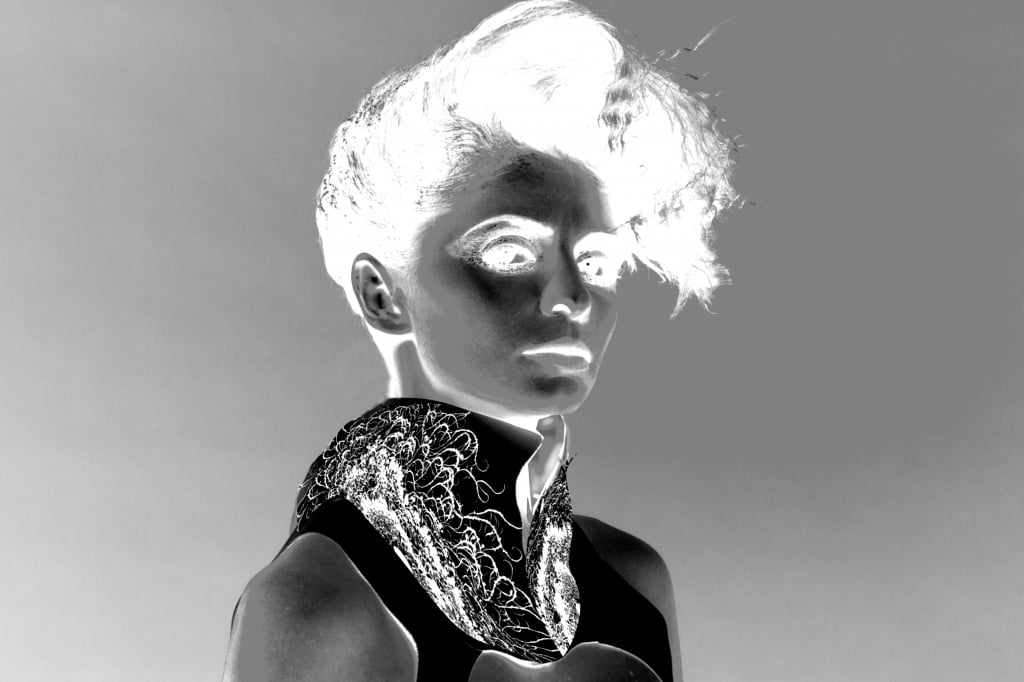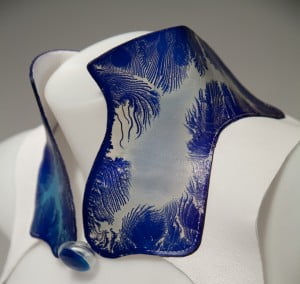The fashion industry often looks to nature as an aesthetic inspiration and translates this into clothes using animal prints. But one designer has taken her inspiration one step further.
Sarine Zaken, a third year fashion design student at Shenkar College of Engineering and Design in Israel, wanted to make a bigger statement, or perhaps a microscopic one, by designing with bacteria.
This new idea that combines science, biology and design, involves the evolution of a biological print that comes from unique patterns of bacteria colonies.
Related Stories:
As her final project for school was approaching, Zaken was thinking of ways to incorporate forms of life into her clothing. “I had a fantasy to bring some life into my design. I was talking to a friend who studies at Tel Aviv University, and during our conversation he pulled out his phone and showed me a picture of this type of bacteria that a researcher in a lab next door was investigating. This bacteria strain, called Paenibacillaceae, grows into various fascinating patterns,” Zaken tells NoCamels.
She immediately contacted the researcher, Professor Eshel Ben Jacob, who gave her the green light to start working in his lab. “I actually found that the lifestyle of these particular bacteria is in many ways similar to humans. And I felt that maybe my dream can come true!” the designer says.
Paenibacillaceae were actually discovered by Professor Ben Jacob himself in the 1990s. They are known to develop complex colonies with detailed architectures that require organization and cooperative behavior, made possible through their complicated chemical communication.
This is a unique phenomenon that reflects the social behavior of the bacteria – whereby the cells work together to survival. They communicate with each other to move around and be able to find sources of nutrition. Since their discovery there has been growing interest in the Paenibacillaceae because they proved to be important in agriculture, horticulture, and even have medical and industrial applications.
Ecocouture
Sign up for our free weekly newsletter
SubscribeZaken’s result was a project called “Ecocouture” that incorporates the patterns of these bacteria to create unique fashion items.
Zaken applies the bacteria to her designs by first growing them in petri dishes. Then, she dyes the resulting patterns and works them into fabrics.
In her work with the bacteria, Zaken attempts to control their communication system by manipulating the ecological conditions of the insemination process. She does so according to a predefined pattern that she sets up in advance.
She tells NoCamels: “Now I know how to control them but we are talking about millions of bacteria, so you never know exactly what will happen. I like to think I’m communicating with them – sometimes it works and sometimes not so much.”
The uniqueness of the bacteria prints is ensured by the bacteria’s communication behavior – each time they grow in a different way. Like a snow flake, every pattern is one of a kind.
Zaken first applied these prints to jewelry and later on to clothing fabrics. She admits it was a risky and uncertain project with a long learning process, during which she received a lot of encouragement but also criticism. “The growth process of the bacteria was very long. I know of no one who tried to grow them in such huge quantities or later on tried to fix them into solid material,” says Zaken.
Zaken, who has already exhibited her work, now plans to focus on the sale of her her jewelry and clothes to the haute couture fashion world.
Photos courtesy of Sarine Zaken
Related posts

Rehabilitation Nation: Israeli Innovation On Road To Healing

Israeli High-Tech Sector 'Still Good' Despite Year Of War







Facebook comments